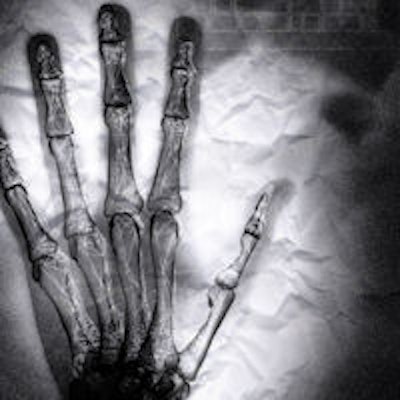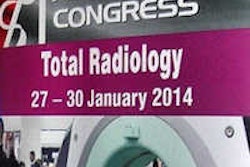
Radiologists and referring physicians are obviously crucial constituents for PACS. But radiographers have their own needs and perceptions that should be accommodated to ensure success when implementing PACS, according to a team of Taiwanese researchers.
What do radiographers want from PACS? Perhaps unsurprisingly, a system they perceive to be easy to use, useful, and reliable, the researchers wrote in an article published online on 22 September in BMC Medical Informatics and Decision Making.
After surveying more than 100 radiographers, the team led by Dr. Wen-Sheng Tzeng of Chi-Mei Medical Center found that several key technical factors affected radiographer satisfaction and, ultimately, their dependence on PACS to do their jobs.
"Managers have an obligation to improve the attributes -- i.e., system quality, information quality, and service quality -- of PACS to enhance [radiographers'] perception of usefulness and satisfaction on PACS," corresponding author Dr. Kuang-Ming Kuo told AuntMinnieEurope.com.
An important role
Radiographers play an important role in the radiology department; without their contributions, radiologists cannot interpret examinations smoothly, Kuo said.
"Without the [radiographers'] ability to assess image quality via PACS, it is not possible for radiologists to interpret the images in a timely manner, which imposes a negative impact on patient care," the authors wrote. "Thus, the [radiographers'] perception of PACS, as it relates to their jobs, is an important issue that hospitals must confront given the increasing rate of PACS adoption."
Because there haven't been many studies investigating the success of PACS from the perspective of radiographers, the researchers felt it was imperative to understand what motivates them to use PACS, Kuo said. The primary objective of the study was to propose and validate a PACS success model that quantified the subjective perception of radiographers.
The group adapted prior models assessing the success of information systems to PACS and studied six variables in their research framework:
- System quality: the extent to which PACS is easy to use
- Information quality: the extent to which the information quality of the output via PACS is sufficient, accurate, and up to date
- Service quality: the extent that PACS performs the service correctly the first time and the ability to fulfill its agreements
- Perceived usefulness: the extent that radiographers believe that utilizing PACS has improved their job performance
- User satisfaction: the degree of radiographer satisfaction with PACS
- PACS dependence: the degree to which radiographers are dependent on PACS for the execution of their tasks
Cross-sectional survey
The team developed a cross-sectional survey to collect the perceptions of radiographers regarding PACS at a large Taiwanese hospital. Questionnaires were distributed to 128 radiographers from the medical center's three campuses in southern Taiwan. Of the 128 who received the questionnaires, 109 submitted usable responses for a response rate of 85.2%.
Of the 109 respondents, 49.5% were male and 50.5% were female. More than 87% were younger than 40 and 88.1% were frontline radiographers. Most (68.9%) had four to nine years of experience with PACS. Based on responses on the five-point Likert scale, the majority of radiographers' perceptions were higher than 3, reflecting that most had positive perceptions of PACS, according to the researchers.
The survey results showed that sociotechnical factors (including system quality, information quality, service quality, perceived usefulness, user satisfaction, and PACS dependence) were effective measures of PACS success, according to the researchers.
"Although the relationship between service quality and perceived usefulness was not significant, other proposed relationships amongst the six measurement parameters of success were all confirmed," the authors wrote.
Usefulness of PACS
Perceived usefulness and user satisfaction are vital for PACS success, and both variables were found by the researchers to be significant antecedents to PACS dependence.
The total effect on PACS dependence was calculated using coefficient of determination analysis; the higher the total effect score (r2) on a scale from 0 to 1, the greater the effect for each variable:
- Perceived usefulness: r2 = 0.60
- User satisfaction: r2 = 0.53
- Image quality: r2 = 0.31
- System quality: r2 = 0.26
- Service quality: r2 = 0.09
"Since perceived usefulness is the most important determinant of PACS dependence (total effect = 0.60), it is incumbent on managers to enhance the radiographers' dependence on PACS by strengthening their beliefs regarding how PACS can improve their performance and effectiveness," the authors wrote.
Perceived usefulness of PACS reinforces radiographers' user satisfaction, which, in turn, results in PACS dependence, according to the researchers.
"The strategy for the target hospital is to increase perceived usefulness of PACS, which can be developed by looking at its antecedents of system quality and information quality," the group wrote. "This suggests that system quality and information quality must be provided to make [radiographers] feel that PACS is helpful to them in their work routines."
System quality
System quality was the second most important predictor of user satisfaction (total effect = 0.36), according to the researchers. Because ease of use is the most important criterion of system quality, hospitals have an obligation to provide an easy-to-use system to boost radiographer satisfaction with PACS, according to the team.
Information quality is another major factor affecting user satisfaction for radiographers, according to the survey. When radiographers felt the PACS could supply helpful information for carrying out their tasks, they were more likely to utilize it and experience a greater degree of satisfaction, the researchers observed.
"Most importantly, when [radiographers] perceive that the information supplied by PACS is sufficient, accurate, and up-to-date for their tasks, they exhibit a higher degree of dependence on PACS," the team noted. "In addition, service quality also plays vital roles in the equation. Thus, managers should ensure that PACS provides reliable service with a superior user interface."
The findings of this study indicate that managers must improve the attributes of PACS, "because at the onset of deployment, [a radiographer] will establish his or her own personal perception regarding its quality (system quality, information quality, and service quality)," the researchers concluded. "When these perceptions are either reinforced or refuted, the [radiographer] will either be satisfied or dissatisfied with the system, and will also develop a perception of usefulness or lack of usefulness of PACS."
In the next phase of their research, the study team may use the model to assess more Taiwanese hospitals to verify its validity and applicability, Kuo said.



















